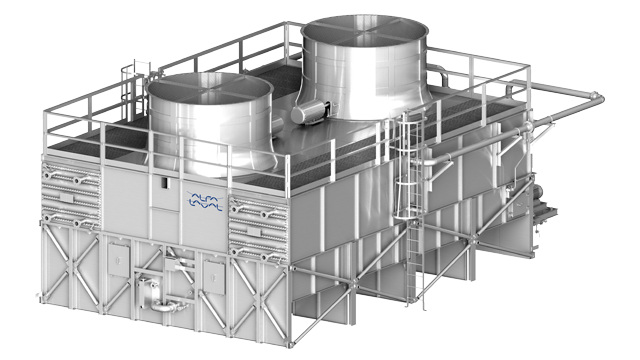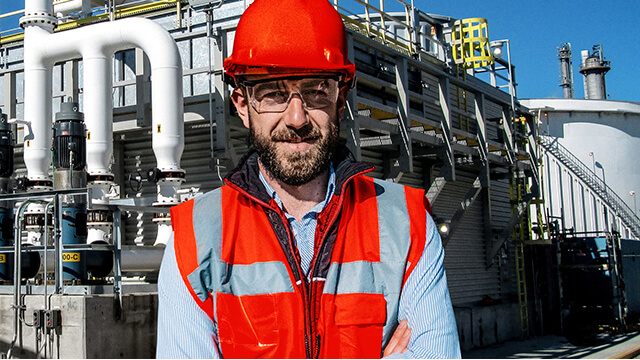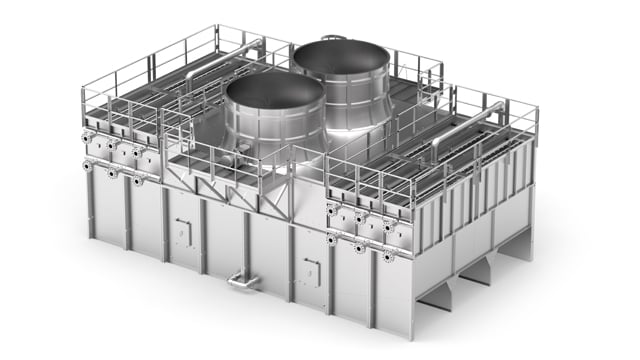Efficient wastewater cooling and reuse
The demand for oil will continue to rise for the foreseeable future. Environmental regulations and freshwater availability are making it difficult for refiners to maintain and expand production capacity. This blog post will examine how to make wastewater cooling more efficient and its reuse.
Refineries use large volumes of water as they treat and refine crude oil. Water is used in the various process units, like distillation and desalting. The water that contacts hydrocarbons is called wastewater and requires treatment before it can be discharged. The ability to efficiently treat wastewater and reduce and reuse the refinery effluent is key to sustainable operations.
A typical wastewater treatment plant has multiple stages. First, the stream enters oil / water separators. The wastewater stream then enters an equalization tank to smooth out variations in flow and concentration. With a balanced stream, biological treatment can begin. Bio-organisms are introduced into the wastewater stream and feed on the organic matter. The bio-organisms are sensitive to temperature; if the waste stream is too hot, they are killed. The optimal temperature range is between 90°F and 100°F. For this reason, the waste stream is cooled before biological treatment.
Cooling
Cooling these waste streams poses a challenge to many heat transfer systems. Open cooling towers and evaporation ponds are not suitable for this application. Both expose the wastewater directly to the surrounding environment. A closed loop solution is required. A dry air cooler provides this closed loop; however, achieving the optimal temperature is difficult, if not impossible. Cooling towers and secondary heat exchangers can be used to create a closed loop. There are drawbacks to this arrangement. The variety of waste products contained in these streams does cause these heat exchangers to become plugged or fouled. Temperature control is also a challenge. A cooling tower typically serves multiple heat exchangers and therefore the cold-water supply temperatures can vary. Heat exchangers are designed for a specific flow rate and temperature profile. Variable wastewater flow rates and cold-water temperature leads to problems controlling wastewater temperature and heat exchanger fouling.
The Wet Surface Air Cooler (WSAC™) is a closed loop evaporative cooler. It is a highly efficient, low maintenance method of cooling wastewater. The basic principle of WSAC technology is heat is rejected directly from the process stream by means of latent (evaporative) heat transfer. A WSAC cooler replaces the need for a separate cooling tower and heat exchanger system. In a WSAC system, the process to be cooled is pumped through the tube bundles. Warm process fluids are cooled in the closed-loop tube bundles. Water is sprayed and air is induced over the tube bundle resulting in the cooling effect. The process fluid being cooled never encounters the environment.
These systems have proven to be a viable solution to control cooling capacity better than other types of heat exchange systems. The WSAC system is designed to approach the wet bulb temperature; it is effective in maintaining the optimum temperature required for the bio-organisms to treat wastewater. WSAC systems can cool process fluids to within 5ºF (2.8ºC) of the surrounding wet bulb temperature. Wastewater temperature can be controlled to +/- 1°F just by varying the fan speed. A WSAC can be designed with multiple tube bundles allowing for turn down and maintenance flexibility. These systems offer necessary cooling coupled with such benefits as water savings, compact footprint and minimal maintenance.
Reduce and Reuse
The WSAC does require a makeup water source. The circulating spray water is not pumped through a heat exchanger (as in an open tower system), therefore higher cycles of concentration can be achieved with lower quality water. After biological treatment and clarifying, a portion of the waste stream can be sent to the WSAC as makeup water. This allows the wastewater to be cooled without the need for additional fresh water. The amount of wastewater discharged from the plant is also reduced because it has been evaporated. The WSAC can be used as a first stage evaporator for a zero liquid discharge plant. This helps a refinery stay within permitting limits and reduce discharge costs.
The WSAC can be used to expand production capacity and reduce freshwater requirements by reusing the wastewater. The wastewater can be reused for other refinery cooling needs using a WSAC. The WSAC can be designed to cool multiple services in one structure. Each process would have a dedicated bundle. With a wide variety of material and component configurations available, each customized WSAC system is optimized for a specific heat transfer application based on the stream to be cooled or condensed (inside the tubes) and the quality of the spray water and air (outside the tubes).
Wet Surface Air Coolers offer more than the ability to meet critical outlet temperatures. Due to the innovative design, WSAC are the most efficient and durable evaporative coolers available. With water savings and utility savings, these systems are an effective wastewater cooling solution. Further, the WSAC can be used to maximize the reuse of the wastewater. Refiners can achieve sustainable operation by turning the wastewater into valuable cooling, and by minimizing energy consumption with the Wet Surface Air Cooler.
HYAC Dual Zone hybrid air coolers – How it works
This animation demonstrates the design and working principle of the Alfa Laval HYAC Dual Zone hybrid air cooler.
Read our latest HYAC case story
Learn about the new HYAC air cooler and how it provides efficient and reliable cooling to a US municipal wastewater plant

Choose the right solution
Not sure which air-cooled heat exchanger is the right solution for you? Let us guide you through the different options.

Niagara - How it works
FlexWater Niagara
Why Niagara?
Alfa Laval Niagara Wet Surface Air Coolers (WSAC®) are custom built, closed-loop cooling and condensing systems that combine high performance, low operating costs, compact size and reliable operation

Read other relevant refinery blog posts
How to cut your refinery cooling water consumption by 30-50%
Reduce carbon intensity while improving bottom line in the refining sector
Overcome the challenges of cooling desalter water effluent
Debottleneck naphtha hydrotreaters with highest project ROI
Refinery alternatives to box coolers
Reducing energy consumption in industrial refrigerant systems
Benefits of Compabloc technology versus shell & tube
Using Packinox heat exchanger for catalytic reforming
Efficient wastewater cooling and reuse
Enabling sustainability goals of renewable fuels projects
Reducing scope emissions at refineries: A closer look into utilizing energy efficiency profitably
Energy efficiency opportunities around different heat exchanger positions in a fractionator – Part 1

